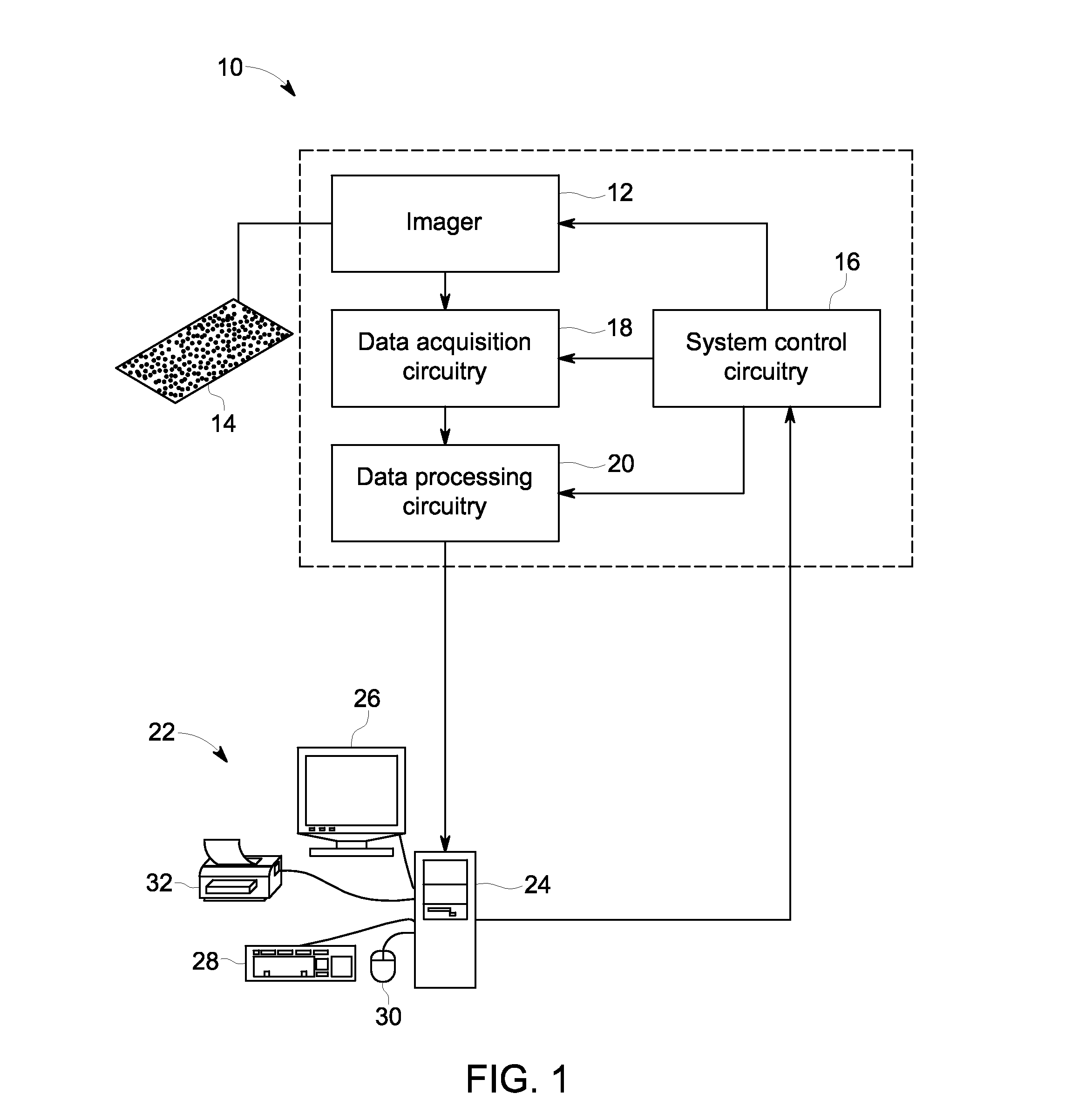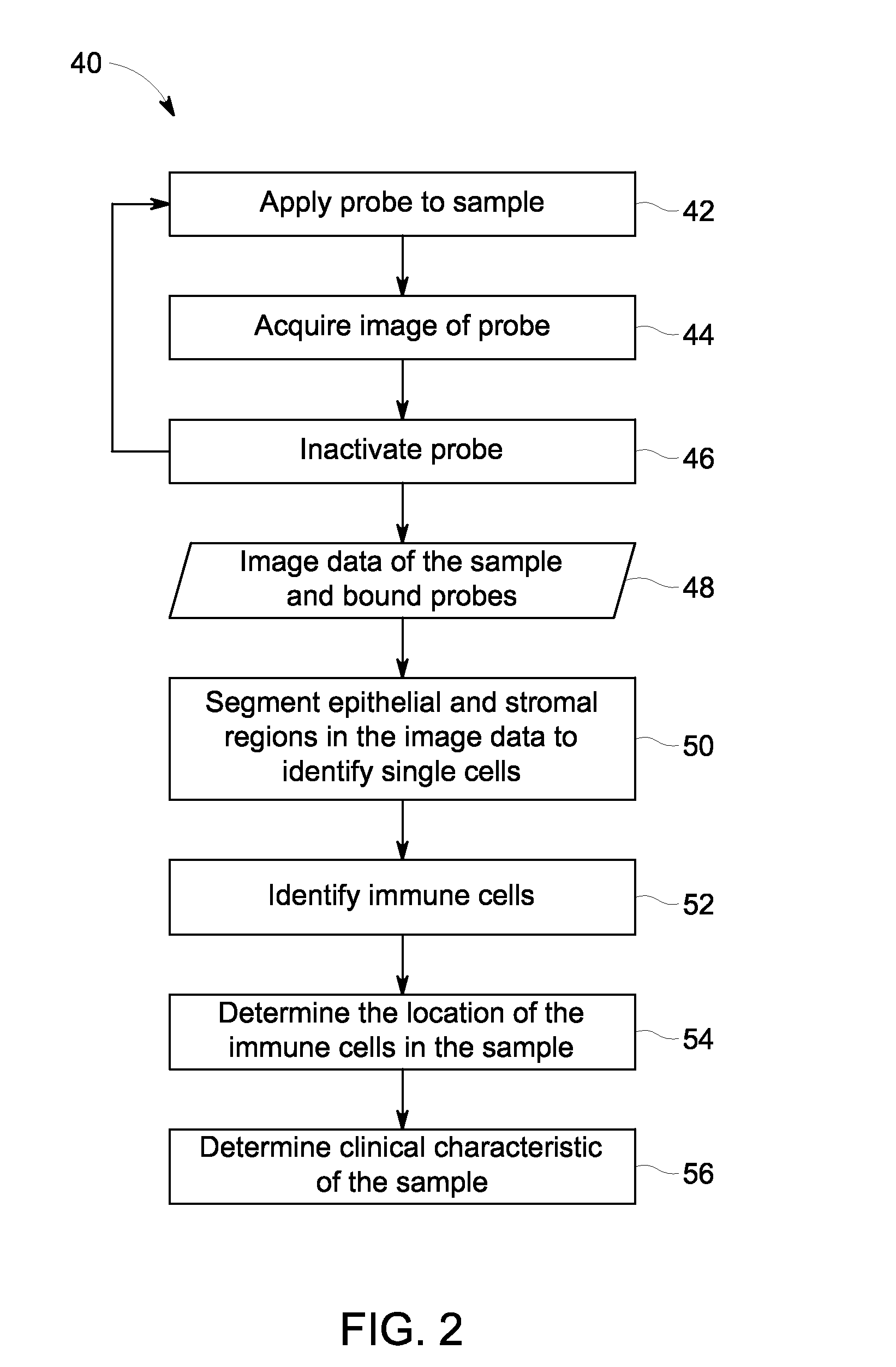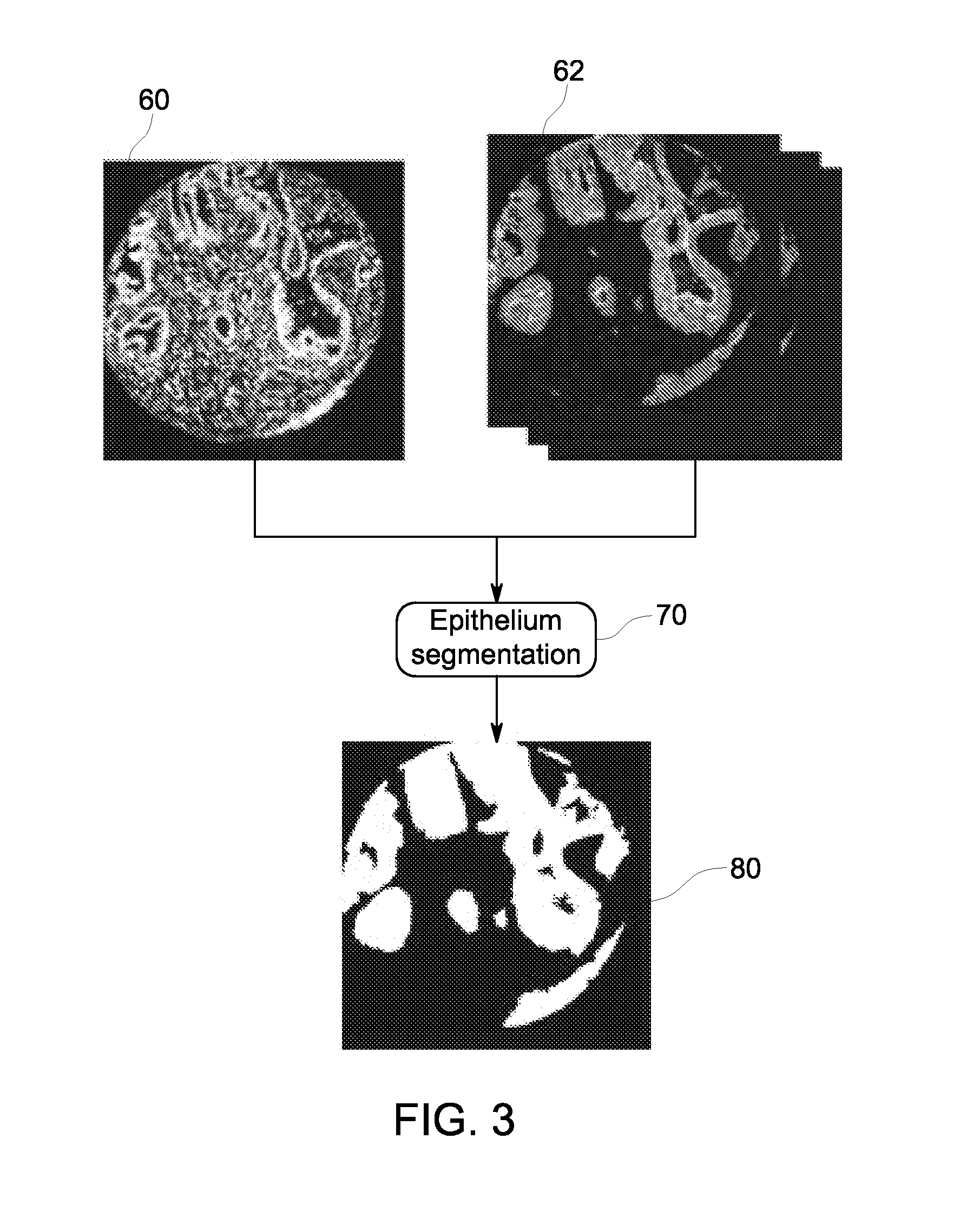Quantitative in situ characterization of biological samples
a biological sample and quantitative technology, applied in the field of immuno-profiling of biological samples, can solve the problems of limited sample amount, loss of original location information, and limited ability to determine relative characteristics of targets
- Summary
- Abstract
- Description
- Claims
- Application Information
AI Technical Summary
Benefits of technology
Problems solved by technology
Method used
Image
Examples
examples
[0047]Multiplexing technology from GE was applied on slides consisting of colon, lung or melanoma tissue microarray (TMA) to map multiple protein expressions of non-neoplastic cells (panel of immune biomarkers and segmentation markers) in the tumor microenvironment. Multiple targets were applied on a single tissue section.
[0048]Lung TMA: Tristar 69571118 NSCLC prognosis tissue array was used which had tissues from 144 European male smokers along with patient information. Slides (#1167) containing various clinic pathological information like histologic types, stage, age, sex, predominantly from squamous and adenocarcinoma were selected for immune profiling. Melanoma TMA: Pantomics MEL961 Melanoma tissue array contained 48 cases of primary and metastatic cancer in duplicates. Colorectal Cancer TMA: Colorectal cancer tissue microarrays were provided by Clarient INC. The colorectal cancer cohort was collected from the Clearview Cancer Institute of Huntsville, Ala. from 1993 until 2002, ...
PUM
 Login to View More
Login to View More Abstract
Description
Claims
Application Information
 Login to View More
Login to View More - R&D
- Intellectual Property
- Life Sciences
- Materials
- Tech Scout
- Unparalleled Data Quality
- Higher Quality Content
- 60% Fewer Hallucinations
Browse by: Latest US Patents, China's latest patents, Technical Efficacy Thesaurus, Application Domain, Technology Topic, Popular Technical Reports.
© 2025 PatSnap. All rights reserved.Legal|Privacy policy|Modern Slavery Act Transparency Statement|Sitemap|About US| Contact US: help@patsnap.com



